“French Copies”
There are a number of Korean Empire Orders that have been copied or reproduced. The older ones are generally referred to as “French Copies” or occasionally as “European Copies”. Peterson in his monograph, “Orders and Medals of the Japan and Associated States”, writes “Korean orders have seldom been mentioned in numismatic literature except for Trost, who apparently had access to a translation of the Korean statutes. His descriptions are generally correct, but the measurements, given as ‘English inches’, are actually in the Oriental “sun”1 of 30.5 mm.” The interesting thing about the Trost publication, is that he lists all the Korean Orders except for the Order of the Auspicious Phoenix, but he only has drawings for the Order of the Golden Measure and the Order of Taeguk.2 As far as I can determine, the Order of Taeguk accounts for the majority of orders that fall into the category of “French Copies”. Surprisingly enough, the older “French Copies” are collectible.
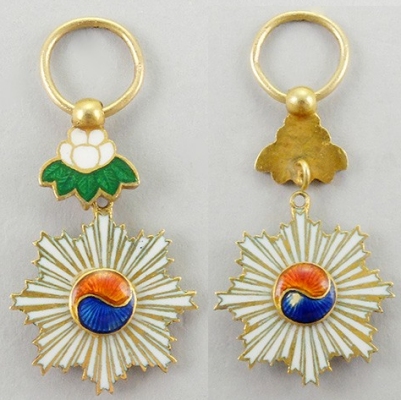
Sold by eMedals, Item #W4867, Oct. 27, 2017
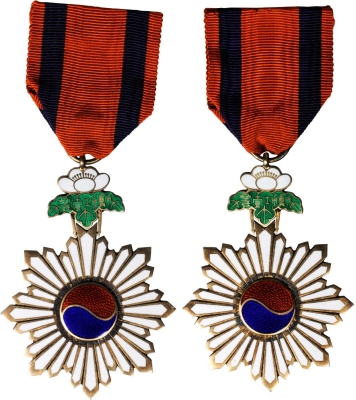
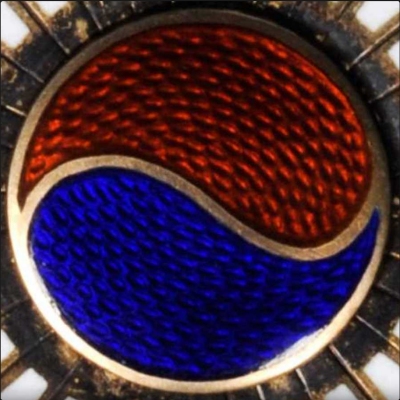
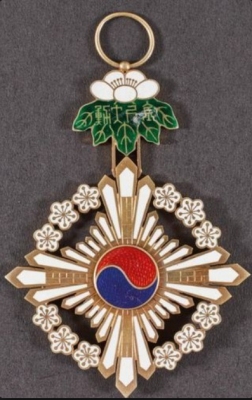




Contemporary Fakes
Within the last ten years, the number of Korean Empire Orders that have been faked has risen dramatically. I have seen several Breast Stars and Commemorative Medals. They are usually easy to spot, but the fakes are getting better. I think some of this is an offshoot of the Orders and Medals needed by Korean Museums. Once the museums got what they required, the manufacturers continued to sell to the collector market. Several that I have seen on EBAY have been described as reproductions, but not all.
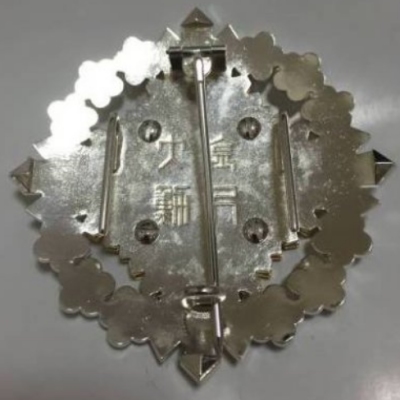

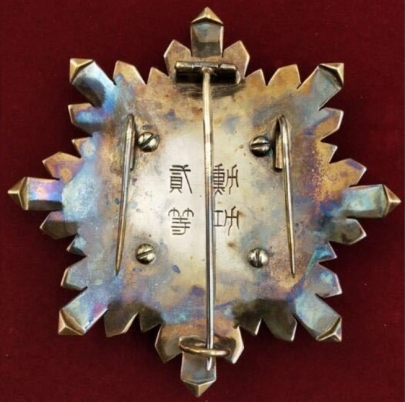
As far as Korean Empire Orders, the Breast Stars are the most often faked. It doesn’t require the manufacture of the ribbon or sash with its stylized Plum Blossom Flower. Most of these are easy to spot because of the highly polished surfaces on the reverse. I have seen the third class pendants with ribbons, along with the second class breast star. This make it a 2nd class award. But so far, of the ones I have seen, the ribbons do not have the necessary hardware to connect the two ends. Of the Commemorative Medals, I have seen reproductions of the Enthronement medal, the 50th Birthday and the Imperial Tour. To see more of these current reproductions, see the Medals of Asia webpage.
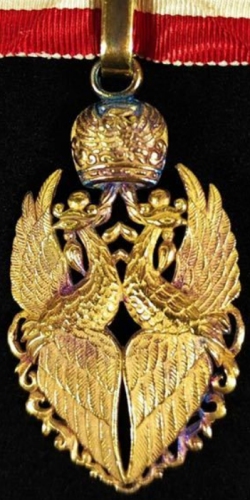
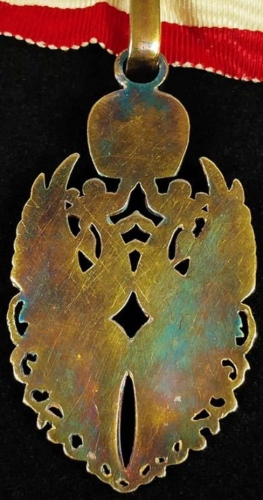
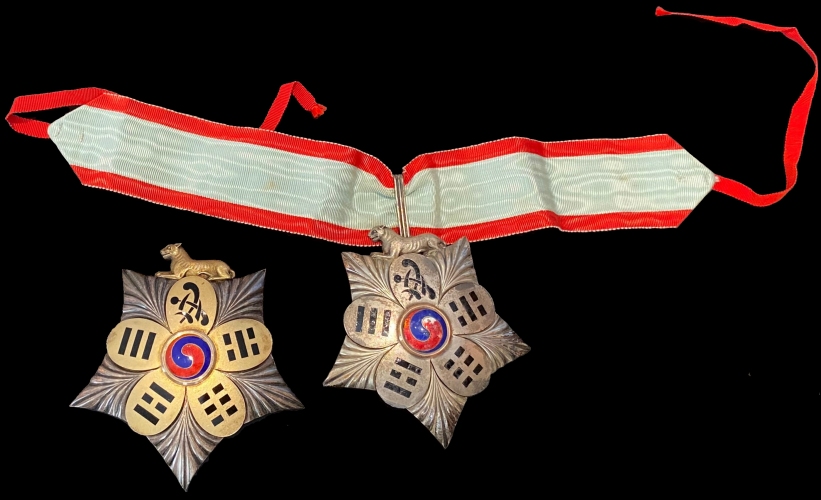
What the?
I am not sure what this medal is. I have seen it on three occasions. On the reverse, the pin has an “ARNO” or “ARND” stamp. I have asked several knowledgeable people what they think about it and I received two very similar responses. The initial response was that: ARNO was a Russian manufacturer with an address in Petrograd. That would place the manufacturer’s location in Russia between 1914 and 1924. (In 1914, St. Petersburg became Petrograd and in 1924, it became Leningrad.) He also thought the set might be Indian related, but that it could be anything. The second response that I received stated that ARND was a medal shop in St. Peterburg /Nevsky 18-12/ until 1902. It was later owned by the Dmitry Osipov company. Two very similar responses, but it still doesn’t answer the basic question of “What is it?”. As far as I can determine, the glyph at the top center is not a Chinese character.
An internet search reveals that Johann-Martin Arndt came to St. Petersburg in 1793. Johann-Helvig and Johann-Samuel Arndt (born in Hanau) appeared in St. Petersburg in 1803. The family relationship between the three of them remains unclear, but the latter two were possibly brothers. Both entered the ‘Guild of Foreign Goldsmiths’, and to avoid confusion with Johann-Martin Arndt, they removed the letter “T” from their last name and turned it into Arnd. One of them had a son named Johann-Samuel Arnd (1812-1890) who entered the guild in 1845 and in the same year he married Sofia-Elizabeth Tegelsten (Sofia Karpovna Тегельстен). They had two sons, Gustav and Ernst, who continued in their father’s trade and entered the guild. In 1849, Johann-Samuel Arnd started a gold and silver workshop in St. Petersburg, Russia. He died on April 2, 1890. His widow may have still been the owner in 1903. But the business had gradually fallen into decay because neither of the sons, Gustav nor Ernst Arnd could withstand the pressure from their competition. The business continued to operate under new ownership. The hallmark of Johann-Samuel Arnd, was S•A or SA, but that was changed after his death by the new owners of the business.
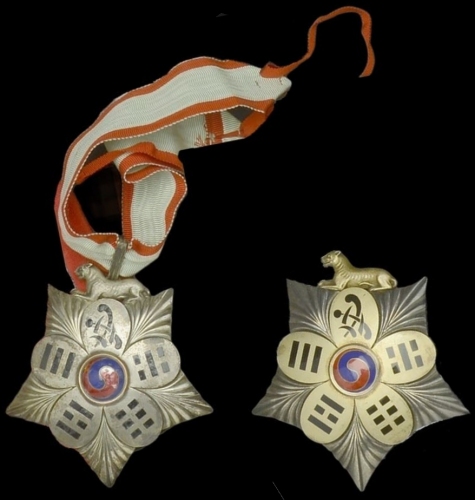
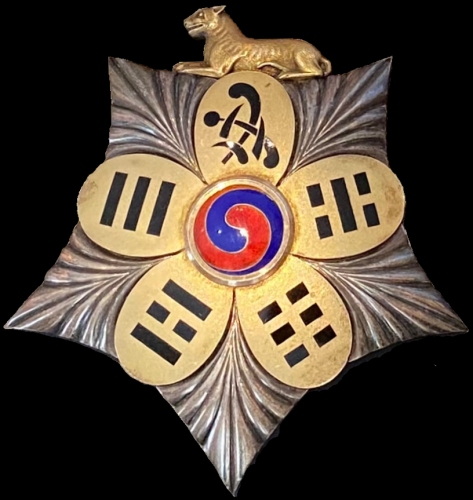
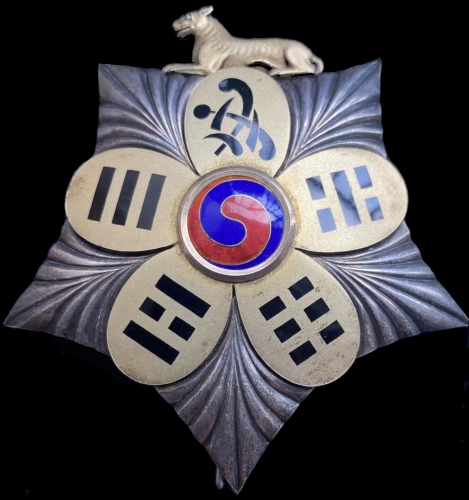
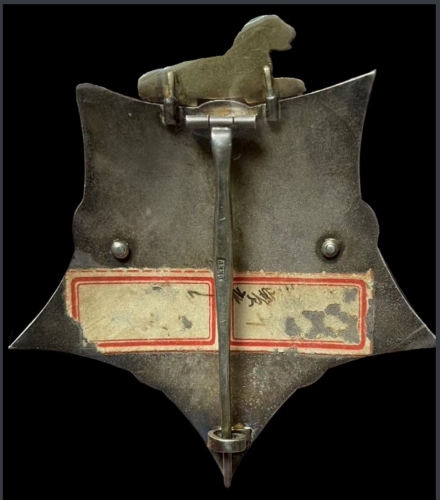
Footnotes:
- In Japan, the unit, sun (寸), was standardized at 1000⁄33 mm (~3.030 cm, ~1.193 in, or ~0.09942 ft).
- Trost, L. J., Die Ritter-und Verdienst-Orden, Ehrenzeichen und Medaillen aller Souveräne und Staaten seit Beginn des XIX. Jahrhunderts (The Knights and Orders of Merit, Decorations and Medals of All Sovereigns and States Since the Beginning of the XIX. Century), by L. J. Trost, published in Wien and Leipzig by Wilhelm Braumüller in 1910.(Korea section: pp.42-45, and Table XXVI, drawings 5 & 6).
- United States Navy Department, Bureau of Navigation. Published by the Navy Department, Washington, D. C., July 1889.
